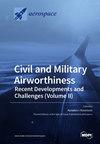火星采样返回捕获密封和返回系统(CCRS)视觉系统
IF 2.1
3区 工程技术
Q2 ENGINEERING, AEROSPACE
引用次数: 0
摘要
美国国家航空航天局(NASA)的 "坚毅 "号火星探测器于 2020 年成功发射,并于 2021 年着陆,从而启动了 NASA 和欧洲航天局(ESA)火星取样返回(MSR)活动的第一阶段。MSR活动的目标是从火星表面收集具有科学意义的样本,并将其送回地球,供地面实验室进一步研究。为实现这一目标,MSR 活动由三个主要航天器组件组成:毅力号火星车、样品回收着陆器和地球返回轨道器。地球返回轨道器上装有捕获、封存和返回系统(CCRS)。火星上升飞行器(MAV)将采集到的样本发射到火星轨道后,CCRS 将对样本进行捕获、处理并送回地球。为了便于通过 CCRS 处理轨道样本(OS),我们设计并开发了一套视觉系统来确定 OS 的捕获方向。视觉系统由两台对电磁波谱可见光部分敏感的照相机和两个由宽带发光二极管(LED)构成的照明模块组成。视觉系统实验室测试和基于物理学的光学模拟预测,CCRS地面处理将能够仅使用从火星轨道传输到地球的单个视觉系统图像正确识别操作系统捕获后的方向。本文章由计算机程序翻译,如有差异,请以英文原文为准。
Vision System for the Mars Sample Return Capture Containment and Return System (CCRS)
The successful 2020 launch and 2021 landing of the National Aeronautics and Space Administration’s (NASA) Perseverance Mars rover initiated the first phase of the NASA and European Space Agency (ESA) Mars Sample Return (MSR) campaign. The goal of the MSR campaign is to collect scientifically interesting samples from the Martian surface and return them to Earth for further study in terrestrial laboratories. The MSR campaign consists of three major spacecraft components to accomplish this objective: the Perseverance Mars rover, the Sample Retrieval Lander (SRL) and the Earth Return Orbiter (ERO). Onboard the ERO spacecraft is the Capture, Containment and Return System (CCRS). CCRS will capture, process and return to Earth the samples that have been collected after they are launched into Mars orbit by the Mars Ascent Vehicle (MAV), which is delivered to Mars onboard the SRL. To facilitate the processing of the orbiting sample (OS) via the CCRS, we have designed and developed a vision system to determine the OS capture orientation. The vision system is composed of two cameras sensitive to the visible portion of the electromagnetic spectrum and two illumination modules constructed from broadband light emitting diodes (LED). Vision system laboratory tests and physics-based optical simulations predict CCRS ground processing will be able to correctly identify the OS post-capture orientation using only a single vision system image that is transmitted to Earth from Mars orbit.
求助全文
通过发布文献求助,成功后即可免费获取论文全文。
去求助
来源期刊

Aerospace
ENGINEERING, AEROSPACE-
CiteScore
3.40
自引率
23.10%
发文量
661
审稿时长
6 weeks
期刊介绍:
Aerospace is a multidisciplinary science inviting submissions on, but not limited to, the following subject areas: aerodynamics computational fluid dynamics fluid-structure interaction flight mechanics plasmas research instrumentation test facilities environment material science structural analysis thermophysics and heat transfer thermal-structure interaction aeroacoustics optics electromagnetism and radar propulsion power generation and conversion fuels and propellants combustion multidisciplinary design optimization software engineering data analysis signal and image processing artificial intelligence aerospace vehicles'' operation, control and maintenance risk and reliability human factors human-automation interaction airline operations and management air traffic management airport design meteorology space exploration multi-physics interaction.
 求助内容:
求助内容: 应助结果提醒方式:
应助结果提醒方式:


